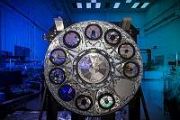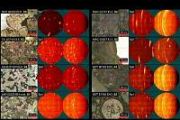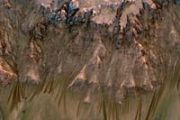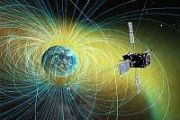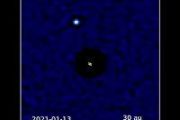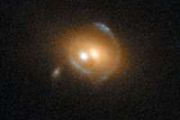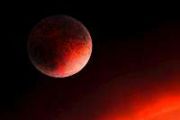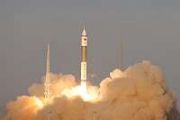
Copernical Team
NASA at your table: where food meets methane
 Today, human sources are responsible for 60% of global methane emissions, coming primarily from the burning of fossil fuels, decomposition in landfills and the agriculture sector. Nearly a quarter of methane emissions can be attributed to agriculture, much of which is from raising livestock. Rice cultivation and food waste are also important sources of agricultural methane, as nearly a third of
Today, human sources are responsible for 60% of global methane emissions, coming primarily from the burning of fossil fuels, decomposition in landfills and the agriculture sector. Nearly a quarter of methane emissions can be attributed to agriculture, much of which is from raising livestock. Rice cultivation and food waste are also important sources of agricultural methane, as nearly a third of NASA tests machine to power the future of aviation propulsion
 A one-megawatt electric motor that could help propel future, more environmentally friendly and economically sustainable aircraft was tested during April and May by NASA and its industry and academic partners.
The center of attention is an electric machine that can work either as an electric motor to turn propellers or large engine fans, or a generator to produce one million watts of power
A one-megawatt electric motor that could help propel future, more environmentally friendly and economically sustainable aircraft was tested during April and May by NASA and its industry and academic partners.
The center of attention is an electric machine that can work either as an electric motor to turn propellers or large engine fans, or a generator to produce one million watts of power USSF establishes 2nd Field Command, Guetlein assumes command
 The U. S. Space Force established the second of its three field commands in a ceremony here Aug. 13, as Space Force Lt. Gen. Michael A. Guetlein assumed command of Space Systems Command.
Speaking during the establishment ceremony, Space Force Chief of Space Operations Gen. John W. "Jay" Raymond emphasized the important work that lies ahead for Guardians and Airmen of SSC. "America relies o
The U. S. Space Force established the second of its three field commands in a ceremony here Aug. 13, as Space Force Lt. Gen. Michael A. Guetlein assumed command of Space Systems Command.
Speaking during the establishment ceremony, Space Force Chief of Space Operations Gen. John W. "Jay" Raymond emphasized the important work that lies ahead for Guardians and Airmen of SSC. "America relies o Space EA Systems delivers satellite-enabled quantum-proof cybersecurity and innovation
 Space EA's new post-quantum encryption network defeats quantum's destructive effect against security, while enabling satellite architectures and communication networks the ability to harness quantum's power for DoD and commercial clients in the space sector.
The advent of quantum computing renders all current security obsolete, causing a perfect storm with the convergence of more and more
Space EA's new post-quantum encryption network defeats quantum's destructive effect against security, while enabling satellite architectures and communication networks the ability to harness quantum's power for DoD and commercial clients in the space sector.
The advent of quantum computing renders all current security obsolete, causing a perfect storm with the convergence of more and more US sensor architecture not sufficient to detect hypersonic missiles
 US military's sensor architecture is not sufficient to effectively detect hypersonic missiles across the world while Russia today is the leading nation for this technology, US Strategic Command chief Adm. Charles Richard said on Thursday.
"It [hypersonic technology] creates challenges that permeate the responsibility of STRATCOM, SPACECOM, NORTHCOM, and every other combatant command," Rich
US military's sensor architecture is not sufficient to effectively detect hypersonic missiles across the world while Russia today is the leading nation for this technology, US Strategic Command chief Adm. Charles Richard said on Thursday.
"It [hypersonic technology] creates challenges that permeate the responsibility of STRATCOM, SPACECOM, NORTHCOM, and every other combatant command," Rich SpaceWERX launch drives AFWERX small business focus on universities and on-orbit capability
 On August 19, SpaceWERX will officially launch. The kickoff will include a virtual Space Force Pitch Day highlighting the key partnership between the Department of the Air Force and small businesses by awarding up to $34 million to innovative startups competing for Small Business Innovation Research Phase II contracts. At the launch, SpaceWERX will also announce key initiatives to jumpstart the
On August 19, SpaceWERX will officially launch. The kickoff will include a virtual Space Force Pitch Day highlighting the key partnership between the Department of the Air Force and small businesses by awarding up to $34 million to innovative startups competing for Small Business Innovation Research Phase II contracts. At the launch, SpaceWERX will also announce key initiatives to jumpstart the Microsoft unveils Australian Space Startup launchpad
 Microsoft is delighted to announce the launch of Microsoft for Space Startups Australia designed to support emerging enterprises focussed on cloud-powered innovation on and off the planet. Through this initiative, Microsoft will support and enable cutting-edge Australian space innovation to help solve tough problems, such as bush fire detection, climate change and sustainable practices on Earth
Microsoft is delighted to announce the launch of Microsoft for Space Startups Australia designed to support emerging enterprises focussed on cloud-powered innovation on and off the planet. Through this initiative, Microsoft will support and enable cutting-edge Australian space innovation to help solve tough problems, such as bush fire detection, climate change and sustainable practices on Earth Chinese rocket for Tianzhou-3 mission arrives at launch site
 China's Long March-7 Y4 rocket, which will launch the new cargo craft of China's space station, on Monday arrived at its launch site in southern China's Hainan Province.
The rocket, alongside the Tianzhou-3 cargo craft that has already been transported to the Wenchang Spacecraft Launch Site, will be assembled and tested at the launch site, the China Manned Space Engineering Office (CMSEO)
China's Long March-7 Y4 rocket, which will launch the new cargo craft of China's space station, on Monday arrived at its launch site in southern China's Hainan Province.
The rocket, alongside the Tianzhou-3 cargo craft that has already been transported to the Wenchang Spacecraft Launch Site, will be assembled and tested at the launch site, the China Manned Space Engineering Office (CMSEO) Nearby star-forming region yields clues to the formation of our solar system
 A region of active star formation in the constellation Ophiuchus is giving astronomers new insights into the conditions in which our own solar system was born. In particular, a new study of the Ophiuchus star-forming complex shows how our solar system may have become enriched with short-lived radioactive elements.
Evidence of this enrichment process has been around since the 1970s, when sc
A region of active star formation in the constellation Ophiuchus is giving astronomers new insights into the conditions in which our own solar system was born. In particular, a new study of the Ophiuchus star-forming complex shows how our solar system may have become enriched with short-lived radioactive elements.
Evidence of this enrichment process has been around since the 1970s, when sc Fizzing sodium could explain Asteroid Phaethon's comet-like activity
 As a comet zooms through the inner solar system, the Sun heats it, causing ices below the surface to vaporize into space. The venting vapor dislodges dust and rock, and the gas creates a bright tail that can extend millions of miles from the nucleus like an ethereal veil.
Whereas comets contain lots of different ices, asteroids are mainly rock and not known for producing such majestic disp
As a comet zooms through the inner solar system, the Sun heats it, causing ices below the surface to vaporize into space. The venting vapor dislodges dust and rock, and the gas creates a bright tail that can extend millions of miles from the nucleus like an ethereal veil.
Whereas comets contain lots of different ices, asteroids are mainly rock and not known for producing such majestic disp 
















